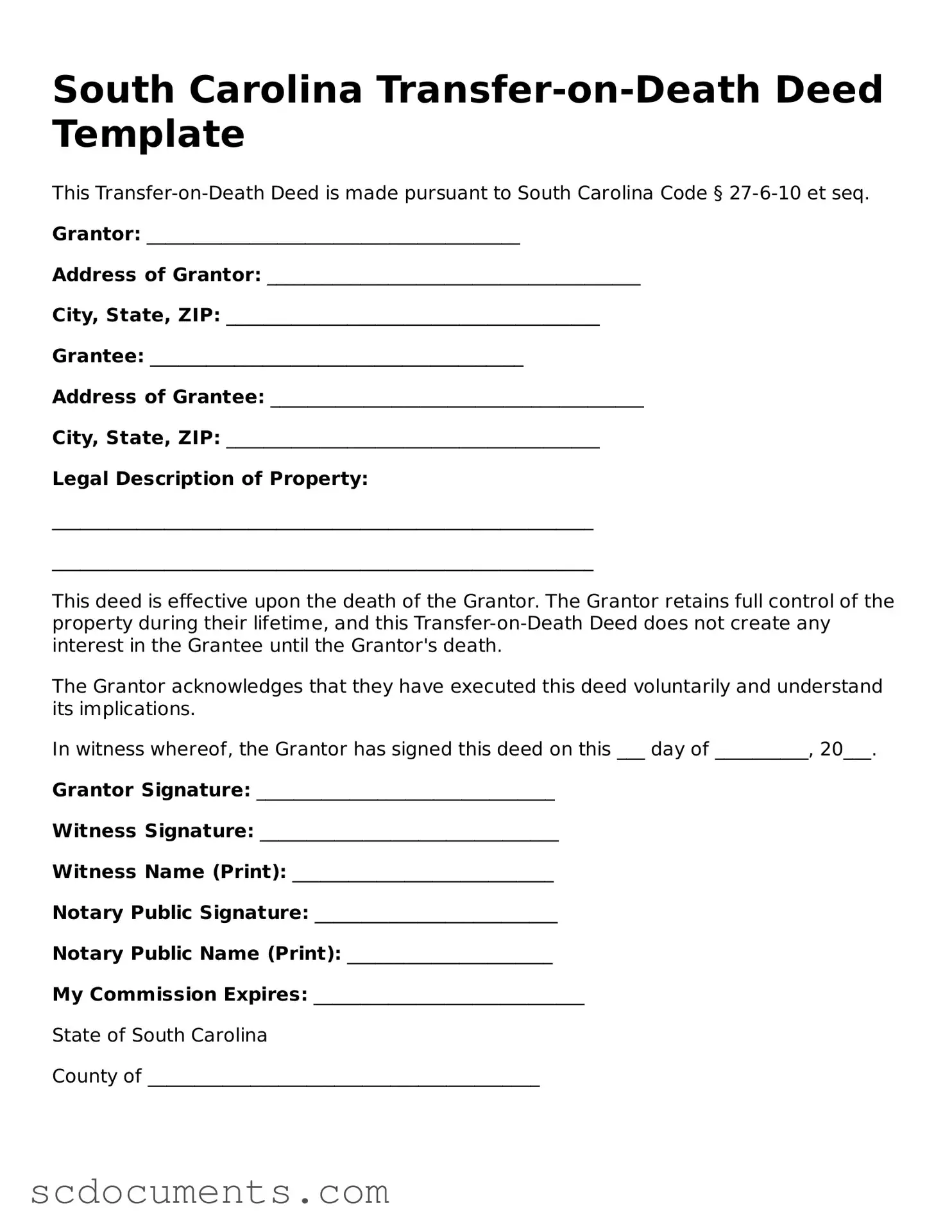Legal South Carolina Transfer-on-Death Deed Form
The Transfer-on-Death Deed form in South Carolina allows property owners to transfer real estate to designated beneficiaries upon their death without the need for probate. This legal instrument simplifies the transfer process, ensuring that assets pass directly to heirs. Understanding its implications and requirements is essential for effective estate planning.
Access My Transfer-on-Death Deed
